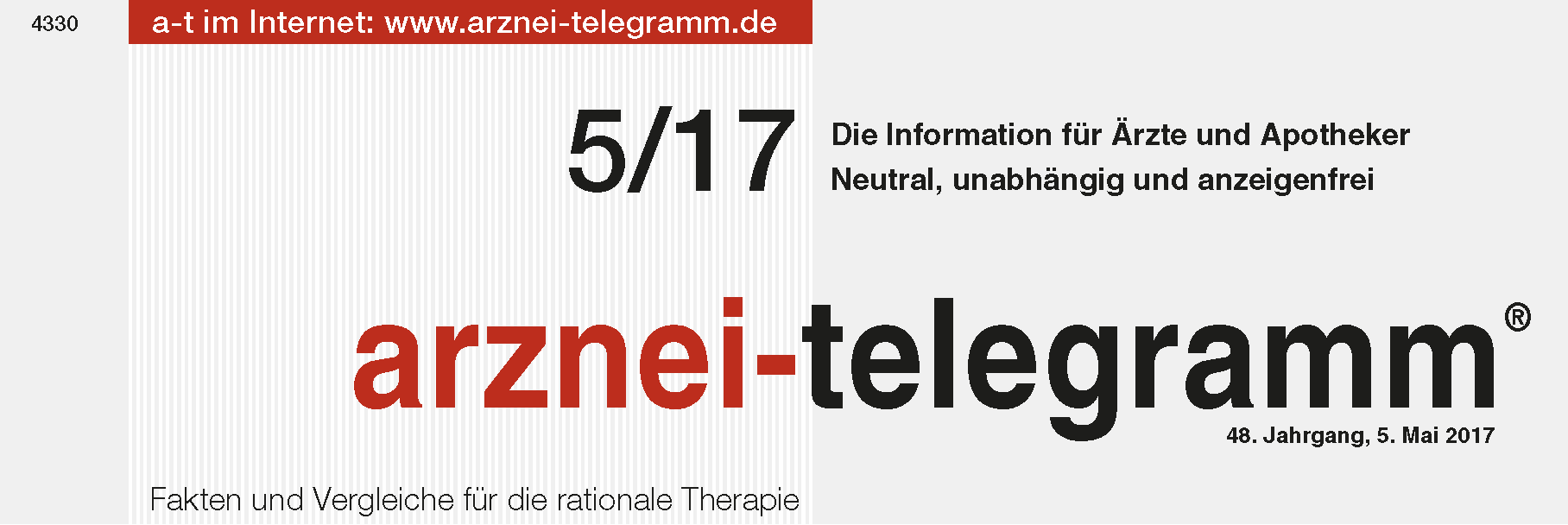
a-t 2017; 48: 44
FIASP: BIZARRE FRUIT OF EVERGREENING
Patent protection for the formulation of the fast-acting insulin aspart (NOVORAPID, a-t 1999; Nr. 11: 115-6), which has been available since 1999, runs out in 2017 (1). Opportunely, the provider Novo Nordisk released a new formulation as mealtime insulin for subcutaneous injection under the trade name FIASP onto the market in April 2017 (so-called evergreening; a-t 2016; 47: 69-70). It is approved for the treatment of diabetes mellitus in adults (2). The only difference between it and NOVORAPID is the addition of the excipient nicotinamide, which is intended to ensure faster initial absorption following subcutaneous injection, as well as arginine hydrochloride as a stabiliser. Aspart is detectable in the blood circulation on average four minutes after injection of FIASP, approximately five minutes earlier than with NOVORAPID (3).
Under EU law, in order to gain separate approval for new medicinal products that contain the same active substance at the same strength and in the same pharmaceutical form as a medicinal product already marketed by the same provider and which differ from this product only with regard to excipients, there must be evidence that the new products differ significantly from the approved product in terms of efficacy or safety, and that this is attributable to the excipients. Of the differences cited by Novo Nordisk as justification for separate approval for FIASP - better postprandial blood sugar control, greater reduction of HbA1c in type 1 diabetes as well as (!) an increase in hypoglycaemic episodes one to two hours after a meal - only the difference in the time of occurrence of hypoglycaemic episodes remains on the table in the EMA's view following scrutiny of the approval data: hypoglycaemic episodes following prandial administration that are either severe or confirmed by blood sugar measurement are significantly more common within the first hour after a meal in type 1 diabetes and within the first two hours in type 2 diabetes than with NOVORAPID (rate ratio [RR] 1.48, 95% confidence interval [CI] 1.11-1.96 and 1.60, 95% CI 1.13-2.27, respectively). Overall, the number of hypoglycaemic episodes increases with FIASP numerically (RR 1.01 vs 1.09). The EMA does not view the slight differences between FIASP and NOVORAPID with regard to the post-prandial glucose increase and HbA1c in type 1 diabetes as relevant (3). The ground for approval of FIASP is therefore the fact that it causes more frequent hypoglycaemic episodes immediately after a meal!
The price for 10 pre-filled pens with 300 units is identical for FIASP and NOVORAPID at €127.68. This is 42% higher than the price of short-acting human insulin (e.g. INSUMAN RAPID €89.64).
The rationale for the approval of the insulin aspart preparation FIASP in time for expiration of the NOVORAPID patent could hardly be more absurd. We are looking forward to the advertising campaign for the new preparation: "FIASP - significantly faster hypoglycaemic"?
| 1 | Novo Nordisk: Full-year 2016 investor presentation, Febr. 2017; http://www.novonordisk.com/content/dam/Denmark/HQ/investors/irmaterial/investor_presentations/2017/20170202_Q4%20Roadshow%20presentation.pdf | |
| R | 2 | Novo Nordisk: SPC FIASP, as at Jan. 2017 |
| R | 3 | EMA: Europ. Public Assessment Report (EPAR) FIASP, as at Nov. 2016; http://www.ema.europa.eu/docs/en_GB/document_library/EPAR_-_Public_assessment_report/human/004046/WC500220940.pdf |